Top speed 407 km/h Length 21 m | Wingspan 32 m First flight 1945 | |
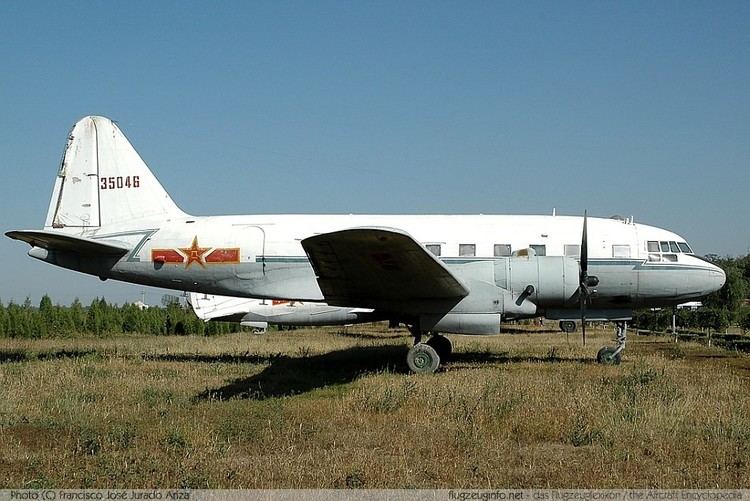 | ||
12 ilyushin il 12 take off and landing fs2004 mp4
The Ilyushin Il-12 (NATO reporting name "Coach") was a Soviet twin-engine cargo aircraft, developed in the mid-1940s for small and medium-haul airline routes and as a military transport.
Contents
- 12 ilyushin il 12 take off and landing fs2004 mp4
- Design and development
- Operational history
- Export sales
- Variants
- Accidents and incidents
- Operators
- Specifications Il 12
- References
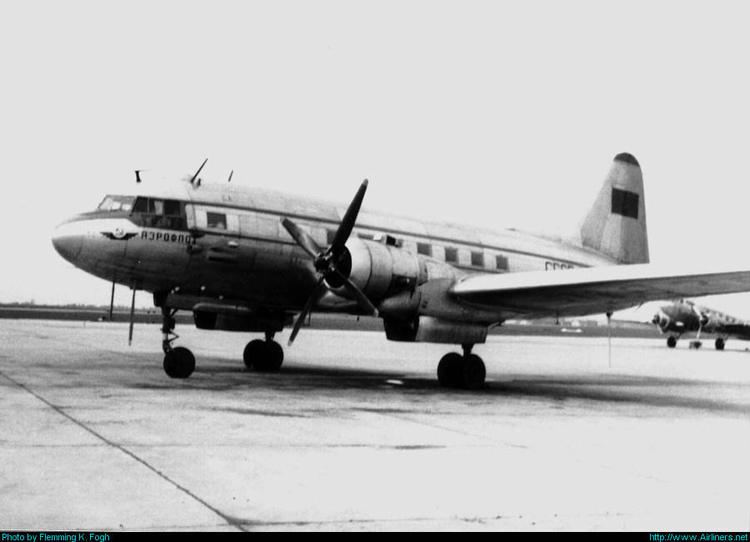
Design and development
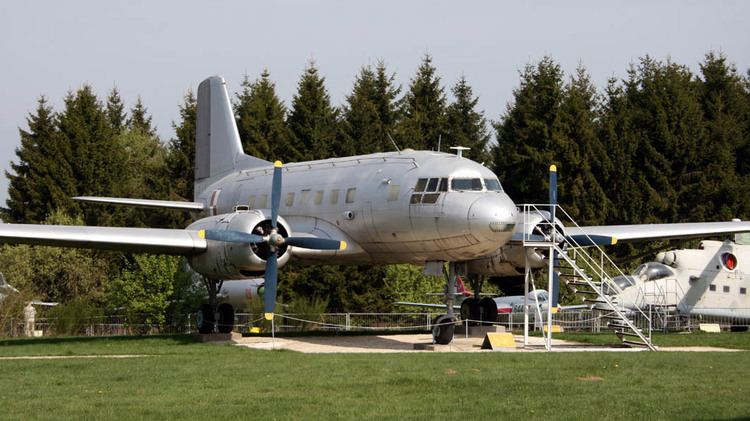
The Il-12 was developed as a private venture by the Ilyushin Design Bureau from autumn 1943 and was intended as a replacement for the Lisunov Li-2, a license-produced version of the Douglas DC-3. The new aircraft followed a classical layout for a twin-engine transport, with a metallic structure, monoplane wings, a conventional tail section. One major improvement over the Li-2 design was the tricycle landing gear, which allowed better visibility when taxiing and landing. Initially the Il-12 was designed for 29 passengers in a pressurized fuselage, with projected maximum range is assumed of 5,000 kilometers at a cruising speed 400 kph. The aircraft was to use four M-88B engines already proven in use on the Ilyushin Il-4.
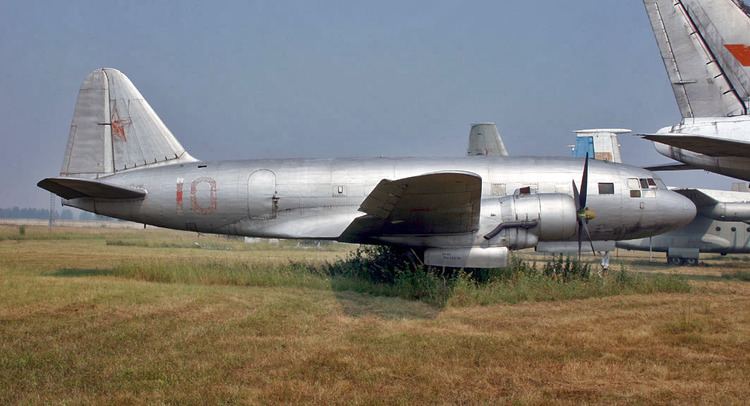
However, during development, the M-88B engines had to be replaced by two ACh-31 diesel engines (each producing 1,500 hp). The plans for a pressurized fuselage were abandoned and the number of passengers reduced to 27. The Il-12 made its maiden flight on 15 August 1945. It was soon decided to re-engine the aircraft with Shvetsov ASh-82 radial engines with the revised aircraft flying on 9 January 1946.
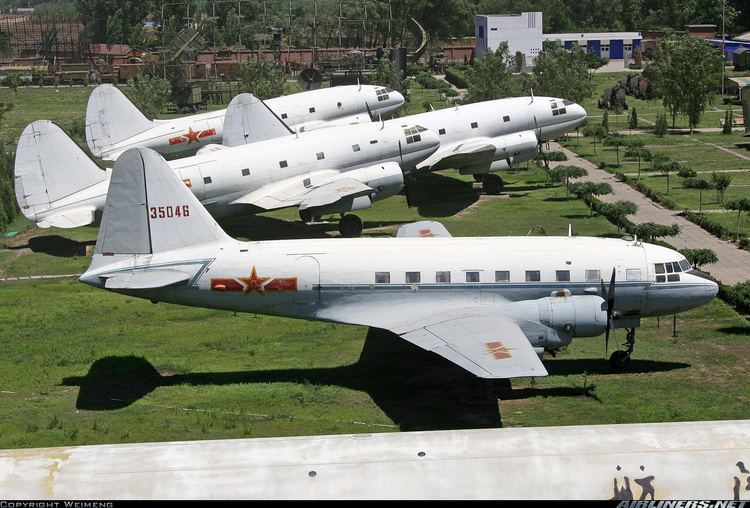
The Il-12 was found to have problems with vibration during testing, having poor engine out characteristics and requiring a strut under the rear fuselage to prevent tipping during loading due to center-of-gravity problems. Further problems was the use of magnesium near the engines which in case of engine fire could cause an uncontrolled fire, damaging the wing structure. (This was later revealed by a crash of an Ilyushin Il-12 near Voronezh which killed all on board, following an engine fire. Subsequently, as a result of the accident investigation, the magnesium was replaced by aluminium alloys and the fire extinguishing system was redesigned.) However, once these problems were resolved, factory test pilots praised the quality of the new aircraft, which contributed to the decision to launch the Il-12 in series production.
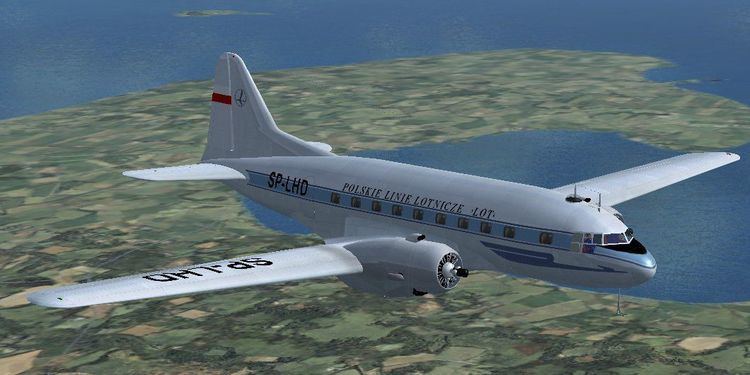
The fuselage of the Il-12 had a considerable volume, and was equipped with eight rectangular windows on each side. The crew consisted of three and the aircraft could transport 32 soldiers, 32 parachutists or cargo. There was also a civil version, which although designed to carry up to 32 passengers, was limited in Aeroflot service to 21, with normally only 18 carried. At that passenger load, it meant that use of the Il-12 for passenger use was un-economic.
A total of 663 Il-12s were manufactured. The aircraft was later improved into the Ilyushin Il-14.
Operational history
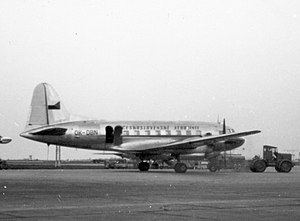
The Il-12 was revealed to the public on 1 May 1947, when a group of aircraft participated in the annual May Day flyby over Red Square in Moscow. Performance testing was completed by 20 May, and the first regular passenger service by the Il-12 on Aeroflot began in June 1947. The first regular international use of the Il-12 was on the Moscow-Sofia route in 1948. The Il-12 was used on Aeroflot's services to Paris from 1954.
Within the USSR, the Il-12 was placed on Aeroflot's longest route: Moscow-Khabarovsk, with the flight lasting 28 hours, including five refueling stops. From 1956, the Il-12 (modified for use on ice runways) supported the Soviet expeditions to Antarctica. Aeroflot continued to use the Il-12 on some routes until the end of 1970.
Export sales
The first export customer for the Il-12 was LOT Polish Airlines, who placed an order for five Il-12Bs after it was displayed at the Poznan Fair in Poland in the spring of 1948. This was followed by Czech Airlines, who purchased 10 aircraft from 1949–1951, TAROM in Romania from 1949, and at least 20 aircraft to CAAC in China.
Variants
Accidents and incidents
Of the 663 Il-12s produced, 49 have been lost in accidents with a total of 465 fatalities.
Operators
Imported 42 IL-12 airliners from 1950 to 1951 used to airlift to Lhasa during the Incorporation of Tibet into the People's Republic of China. Some were refitted to aerial survey airplanes later. Retired in 1986.
Specifications (Il-12)
Data from The Osprey Encyclopedia of Russian Aircraft from 1875 - 1995
General characteristics
Performance
